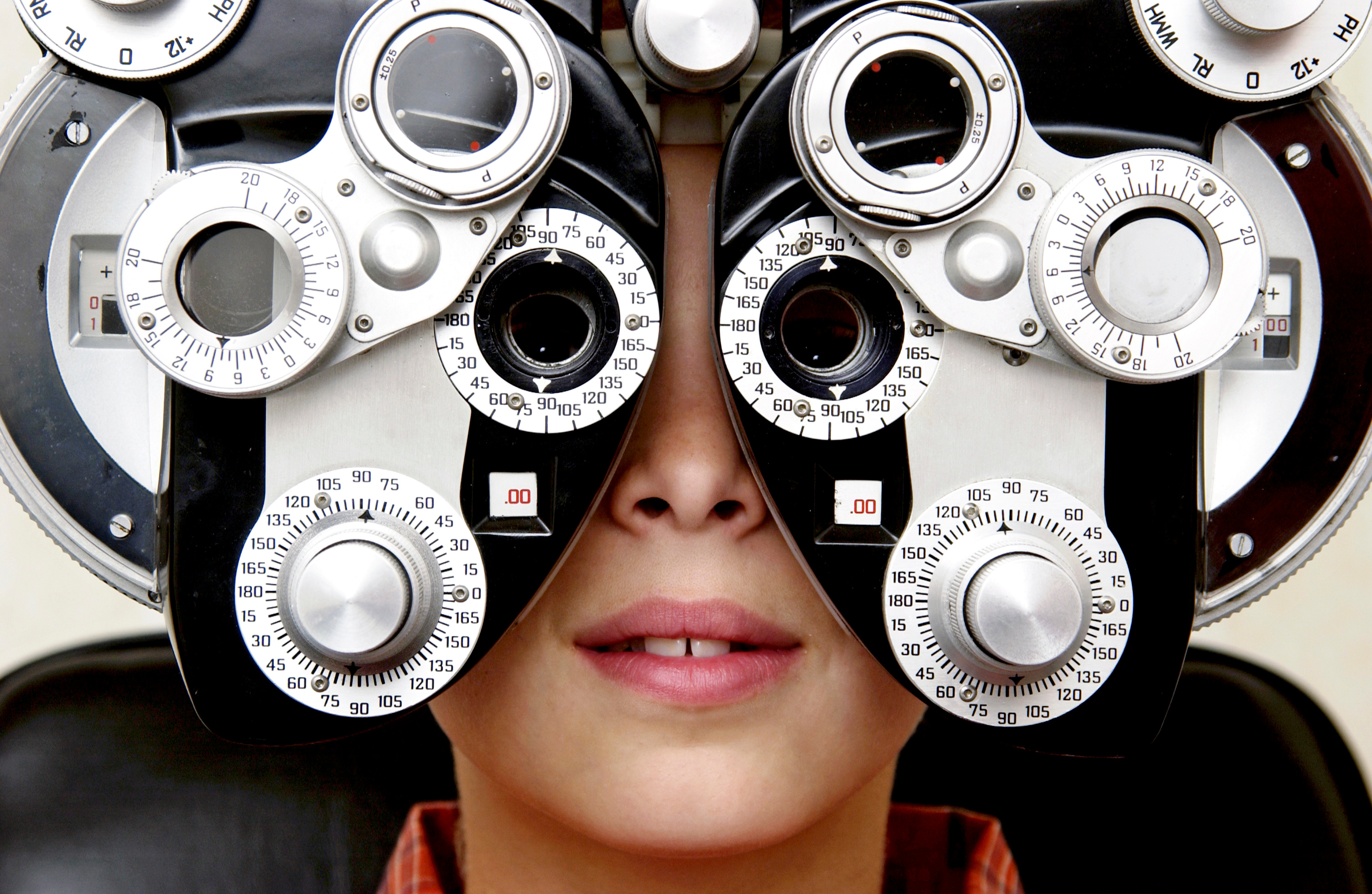Childrens Eye Exams
A child’s vision care is imperative for proper development and warrants special considerations. One such consideration is a yearly eye exam which ensures proper and healthy development of your child’s eyes and allows for early detection of vision problems and eye diseases.

SIGNS YOUR CHILD MAY HAVE VISION ISSUES
Signs that your child has a vision problem can manifest both physiologically and through certain behaviors. Monitoring your child for these signs or symptoms can help in identifying vision issues:
- Excessive eye rubbing
- Extreme light sensitivity
- Inadequate ability to focus
- Poor visual tracking (following an object with their eyes)
- Abnormal movement or alignment of the eyes (after six months of age)
- Chronic redness or tearing of the eyes
- Crossed eyes
- A white pupil
If your child is already in school, these signs may indicate a vision problem:
- Inability to see objects at a distance
- Inability to read the board in class
- Squinting often
- Difficulty reading
- Regularly sitting too close to a TV or computer monitor
When should you have your child’s vision tested?
Children should have an eye exam yearly unless there are specific risk factors or conditions at play. In either of these cases, your eye doctor may recommend an exam more frequently.
Also, in Illinois, children entering kindergarten or enrolling for the first time in public, private, or parochial elementary school are required to have a comprehensive eye exam performed by an Optometrist or Ophthalmologist
Is a school vision test adequate?

Unfortunately many parents and educators assume passing an in-school vision screening means there are no vision problems. This can lead to near vision problems going uncorrected, as these school screenings usually test only distance vision.
Your child should have an eye exam after a school screening if:
- They have any of the issues above
- They are not achieving their full potential in or outside of class
- They are able to achieve their full potential in and outside of class, but only when extreme amounts of time and effort are invested
Vision changes can occur without yourself, your child, or educators noticing. Therefore, it is extremely important for your child to receive a yearly eye exam. The earlier a vision problem is detected and treated, the more likely the treatment is to be successful.
How do you test children’s vision and eye health?
Eye exams generally include evaluating family and medical history, testing of vision and eye alignment, and an eye health evaluation. The specifics of how exams are conducted depend on the child’s age.
For children who can read, the test is similar to that of adults. While covering one eye, the child is asked to read letters on the Snellen eye chart.
For children who cannot yet read, your eye doctor may use a chart of LEA symbols rather than letters. These symbols include an apple, square, circle, and house.
A random dot stereopsis test will likely also be done. This test uses special 3-D glasses and specially designed patterns of dots to determine how well your child’s eyes work together.
To determine your child’s eyeglass prescription, your eye doctor may instead use a retinoscopy test in which s/he shines a light into the eye to observe the reflection from the retina. This test is generally reserved for if other methods don't prove useful.
How do I schedule my child's exam?
We know life can be hectic, which is why we make it easy for you to schedule an exam. Our contact information can be found in the Contact Us section of this website, and we welcome you to reach out to either of our offices via email or phone to set up an appointment!
